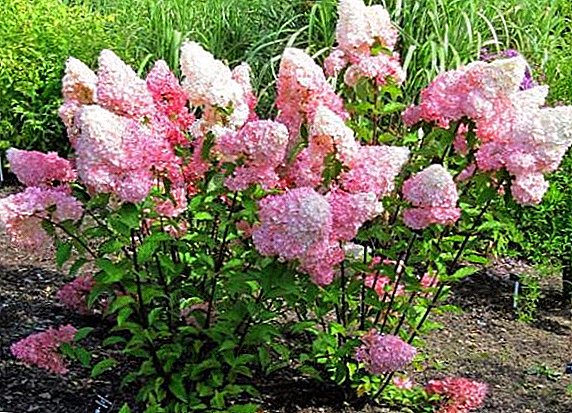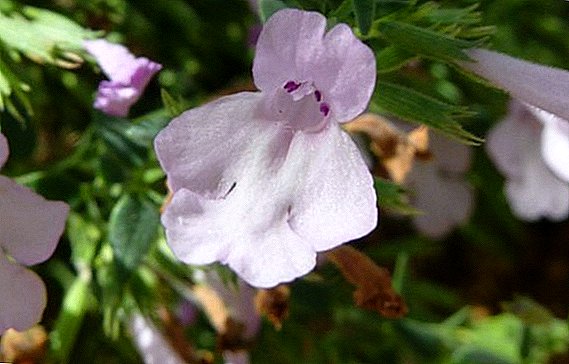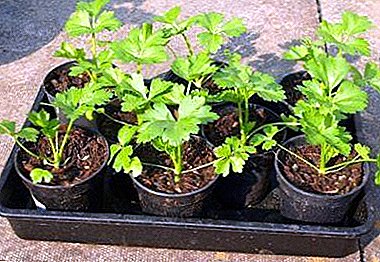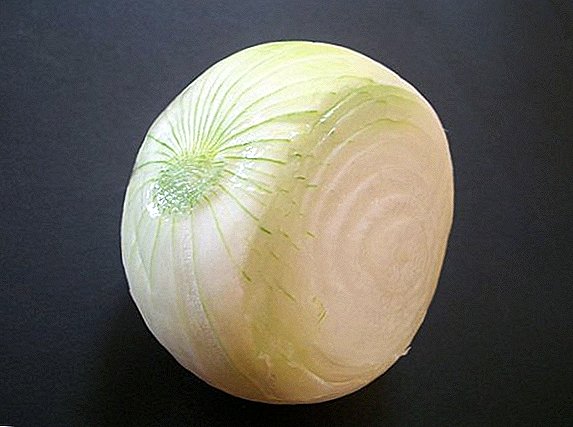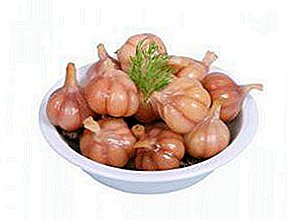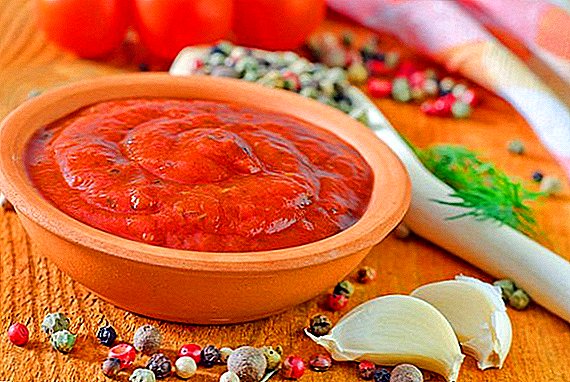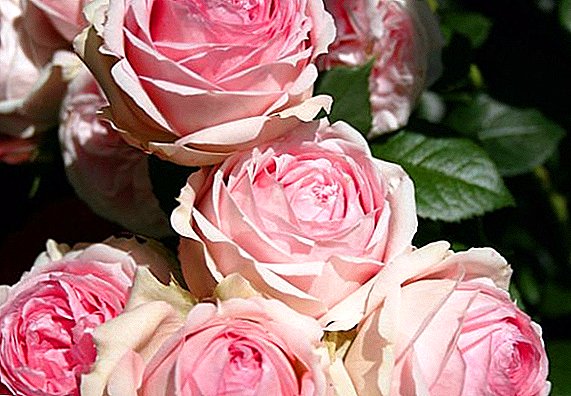 Buying roses for the dacha decor, many want to learn more about their purchase. Of course, a competent implementer will talk in detail about the features of caring for them, and at the same time sometimes it feels like - for a person, flowers have become an integral part of life, and not just a hobby or income. One of such enthusiastic people is Vitaly Valerievich Spiridenko, who lives in the city of Rubtsovsk and founded the nursery “Lady Rose”, well-known all over the country, whose assortment deserves a separate description.
Buying roses for the dacha decor, many want to learn more about their purchase. Of course, a competent implementer will talk in detail about the features of caring for them, and at the same time sometimes it feels like - for a person, flowers have become an integral part of life, and not just a hobby or income. One of such enthusiastic people is Vitaly Valerievich Spiridenko, who lives in the city of Rubtsovsk and founded the nursery “Lady Rose”, well-known all over the country, whose assortment deserves a separate description.
Canadian selection
From such plants often begin to form an impressive collection of roses growing on the site. Beginners are attracted not only by their spectacular color, but also by their unpretentiousness - the “canadas” tolerate frosts and are easy to maintain.  In addition, they delight the eye before the first frost: the breeders have taken care to maximize the flowering period.
In addition, they delight the eye before the first frost: the breeders have taken care to maximize the flowering period.
Check out such varieties of roses as Gloria Day, Cordes, Anniversary of the Prince de Monaco, Kerio, New Dawn, Chopin, Abraham Derby, Mary Rose, William Shakespeare "," Graham Thomas "," Blue Perfume "," Pink Intuition "," Falstaff "," Pierre de Ronsard "," Sophia Loren "," Rugoza "," Floribunda "."Lady Rose" offers the following Canadian varieties:
- "Alexander MacKenzie". High (up to 1.5 m) straight bushes with wavy flowering have elongated buds that “shoot” bright red double flowers 5-7 cm in diameter. But that's not all - at the same time there is a delicate strawberry flavor;

- "John Cabot" - higher (up to 2 m) line with “glamorous” shiny leaves of light green color. Calyx flowers usually appear in the first weeks of summer: their pink tone contrasts with bright yellow stamens. Flowering often repeats closer to the fall (albeit on a smaller scale);

Important! Before you buy, be sure to find out if the selected seedlings are in stock. Keep in mind that the nursery is already accepting the spring orders of 2018 (applications can be submitted until March 15), while there are no autumn mailings.
- "Quadra". Ideal for aesthetes. The vigorous shrub stands out for its large (8 cm) flowers, which are collected in brushes up to 4 pcs. If you look closely, it turns out that the petals are as if pressed to the center and placed symmetrically;

- "Morden Snow Beauty" with white fragrant flowers of large diameter (7.5-8 cm). The bush itself is not so big: about 0.7–1 m, but sprawling — in the summer, neat white brushes with 3-5 flowers each are striking;

- "Teresa Bagnet". Besshipny variety stands out for a long activity - pink flowers with tightly compressed, slightly tousled petals are visible all summer. The earliest (June) processes are gradually replaced by darker in color in colors, 7-8 cm each. In combination with a powerful (up to 1.7 m) bush looks spectacular.
 This is not a complete list, but only the most popular of the frost-resistant lines.
This is not a complete list, but only the most popular of the frost-resistant lines.To frost-resistant plants also include spirea, camellia, magnolia, chrysanthemum, hydrangea, dwarf willow, white poplar.In addition to them, growers can choose plants of such varieties:
- "Connell". A beautiful pale yellow rose without thorns has impressive brushes (6-7 flowers each), but still needs shelter;
- the sprawling "Captain Samuel Holland", which often includes densely populated hands in 10-13 pale crimson colors;
- "Martin Frobisher" pinkish milky;
- "Morden Centenniel", which freezes through only in severe frosts (below -30 ° C);
- "Prairie Joy" with weighty bright pink flowers of 8-11 cm each;
- "Sir Thomas Lipton", which will decorate any fence with its somewhat shapeless appearance;
Did you know? It is not for nothing that rose oil is valued on the same level with platinum (and even more expensive) - only 1 kilogram of this product takes up to three tons of petals to prepare!
- "Humanity" purple;
- Champlain, often used for hedges. It is good for its red design and subtle smell, but there is one nuance - this rose is not growing very actively, giving a lot of strength to bright flowers.

Climbing
A lot of attention is paid to popular climbing species. There are all the conditions for obtaining strong branchy seedlings. The bushes grown here after relocation do not lose their decorative effect.
Championship traditionally belongs to the varieties red colors:
- Rambler. This is a kind of classic. Branches up to 5 m in length fit perfectly on the arch, and abundant flowering makes such a rose a desirable acquisition. Fragrant flowers (an average of 8.5 cm) can bloom separately or with a small brush;
- "Santana" with its all-season blooms. The shade of double flowers (up to 11 cm) is distinguished by its saturation. The image is played by spectacular big buds that resemble flames in color;
- "Scarlett", which is characterized by abundant flowering and honey smell. Cups of 8-9 cm bloom so abundantly that a feeling of a “wall” of flowers is created. The presence of large spines is compensated by endurance - roses are accepted even on poor soils;
- "Shogun". Such bushes grow very quickly, reaching 3 m in height. A good option for those who love everything unusual - a red flower from afar, upon closer inspection, strikes with its coral tint (although overflow of tone is also not uncommon). They are not that big (maximum 8 cm), but neatly assembled and kept on the leg for a long time.

Important! The site for planting is picked up ahead of time, even since winter: it is desirable that at the designated site for the season be at least 0.5 m of snow cover. Also, roses are not planted near the walls on the sunny side.Available and yellow varieties - "Ikonik" and "Ducat 2010".
The first one is small in size (up to 1.2 m on the site and 60 cm in a pot), with bright fragrant flowers 7-8 cm in diameter.
The “Dukats” are larger - 10-centimeter flowers with an unusual core are visible on the hands, which, at a height of 2.5–3 m, is ideal for decorating a summer house.
Moreover, bright green leaves are resistant to pest attacks. 
Pink The color is represented by the following varieties:
- A “harlequin” with a crimson fringing of the calyx (7–9 cm) is less than 50 petals, in turn, which causes the flower to bend a little by weight. Brushes with 4-5 such flowers look gorgeous, especially if the bush grows to 3.5 m;
- "Noema", which is valued for its lasting fragrance and lush color. Experienced flower growers know that this conservative-looking variety distinguishes each flower up to 1-2 days of life, but this is not visible from afar: new ones immediately bloom instead;
- long-blooming "New Down" with a spicy scent. The fast-growing bush grows up to 2.5 cm, delighting all summer with pale flowers. As they get cold, they change their almost transparent color to pink;
- The Polka variety stands out in this row. Terry flowers of the plant, collected in small brushes, sensitively respond to the change of weather during the season. Yellowish-pale color is replaced by pink, and he later turns into yellowish-apricot. A diameter of 10-12 cm makes it possible to consider all these metamorphoses.

Did you know? The Japanese breeders went the farthest in the business of breeding chameleon roses. The variety of the same name bred by them changes color from bright red to white during the day.
Loved by many whites There are not so many lines, but they are really smart:
- "Pale Royal", for example, is distinguished by a dense structure - up to 100 petals can be counted on a flower. Add to this large (up to 13 cm) dimensions, coupled with wrist growth, and you get a real gem of the plot;
- Grade "Schnivalzer" even larger (15-16 cm). Shoots often single, with a pronounced trough. Such giants are sensitive to waterlogging — a bud may not open in rainy summer;
- aristocratic "Elf" with ivory petals, which at the base have a clearly visible green color. Two-meter shoots are often allowed on low supports in order to create a floral cascade.

Soil cover
Having landed several similar plants of different varieties, in a short time you can see a real rose garden on the site. The fact is that the emphasized decorative nature of these roses is combined with their large width - it seems that the flowers simply spread along the ground.
Often, seedlings become professionals: soil-cover species are a traditional element of landscape design. With this array, you can decorate the walkway, curb or walls of the house. Well, framing the reservoir in this way will give a fantastic visual effect.
Important! The best choice would be a two-year sapling. Plant aged 3 or more years old risks not to get used to the new soil.
In everyday life, these roses are also called carpet, which also quite aptly indicates their mode of growth. 
Vitaly Spiridenko and his nursery "Lady Rose" offer all such carpet varieties:
- "Cascade". Low (maximum 40 cm) bushes give plenty of color in the form of small terry cups. They are really small (about 3-4 cm), but collected in massive brushes. Some of them can be counted 20-25 flowers;
- "Mirato" with a pink color. The growth pattern and density of the brushes are about the same, but the flowers themselves are already larger (7 cm), and the bush is higher - in the second year it grows to 1 meter with a girth of 60-70 cm;
- "Fuchsia MD" with wide petals, which holds the brush for a month or more. In size, its pink flowers are a cross between the two varieties mentioned above. Of the external differences, we note the characteristic semi-settling growth, due to which the plant can be used to decorate low struts and walls.
 In summer, it gives such an abundant color that the leaves are not visible at all - they are covered with numerous brushes with small flowers. With a good watering bush can grow up to 1.5 m (many let it on the arched rack).
In summer, it gives such an abundant color that the leaves are not visible at all - they are covered with numerous brushes with small flowers. With a good watering bush can grow up to 1.5 m (many let it on the arched rack).Did you know? In terms of symbolism, no plant in the world can compare with a rose. Of course, the primacy here is for literature, but such symbolism is not alien to other spheres of life. For example, football fans also call their scarves "roses."
White "Swan" is better suited for slopes. Their long stems with large tassels (up to 20 flowers) are covered with a 5- or 6-cm thick “makhra” with a pink rosette in the middle. Dark green small leaves work for decorativeness.
Your site can also decorate such flowers as adonis, lily, knofofiya, atsidantera, dimorofote, gladioli, arabis, abutilon, mattiola, guzmaniya, hydrangea, peonies, dahlias, chrysanthemums.
Hybrid tea
Those who doubt their landscape designer abilities usually prefer traditional straight bushes with large terry flowers. Depending on the variety, their diameter can vary between 9-14 cm, and on the shoots there is a different number of inflorescences (but not less than 3).
Flower growers (and even summer residents with experience) are well aware that most tea roses have rather weak roots, which are strengthened only in the second year.  In this regard, hybrid lines are becoming more and more common.
In this regard, hybrid lines are becoming more and more common.
The nursery "Lady Rose" is famous throughout the Altai Territory and beyond its borders for its collection of hybrid tea-roses - from here more than seventy varieties.
They all have their own flavor and amaze with a variety of color. For convenience, we divide the entire list by this criterion. Let's start with red colors:
- "Catching Red";
- Red Velvet;
- "Red Intuishn";
- "Red Queen";
- "Sofia";
- "Black magic". Note that its buds are distinguished by a too dark shade - it looks almost black.

Important! A seedling with a bare root must be disinfected: the easiest way to rinse it in a weak solution of copper sulfate (for a 10-liter bucket it needs 25-30 g).
They are not inferior in popularity and whites lines:
- "Anastasia";
- "Claire Ocean";
- "Snowstorm";
- "Polo";
- Tineke;
- "Eskimo".

Quite a lot and pink roses varieties such as:
- "Amazon";
- "Aqua";
- "Watercolor";
- "Anna";
- Arifa;
- Athena;
- Bella Pearl;
- "Big Parapel";
- "Bluebl";
- "Valencia";
- "Valztime";
- "Verano";
- "Verdi";
- "Vivaldi";
- "Vog";
- "Henry Mathias";
- "Gloria Dei";
- "Golstein Pearl";
- "Dynasty";
- "Empress Farah";
- Candy Stripe;
- Kronenburg;
- "Cool Watter";
- "Latin Lady";
- "Lady Like";
- "Leonidas";
- "Malibu";
- "Movistar";
- "Monica";
- Norita;
- "Nostalgie";
- "New Fashion";
- "Osiana";
- "Paradise";
- "Song of the Ocean";
- Pizaz;
- Rossini;
- "Fairy Queen";
- "Titanic";
- "Topaz";
- "Chaim Satin";
- "Elegance";
- "Engement".

Those who love yellow color, will appeal to representatives of the varieties:
- "Versilia";
- Landora;
- "Lindsay";
- "Orange Juice";
- "Santa Fe".

These are the roses of the so-called "cross" lines:
- "Angelica" and "Verano", "Golden Dragon" and "Confetti" (all of them have orange-red petals, which periodically "play" with color);
- "Pareo" with an unusual tapered bud and tangerine coloring with pink splashes;
- red and white "Whim";
- Blue Nile purple.
- "Black Baccarat", the petals of which are painted maroon in summer (approximately, like velvet), and closer to the autumn they begin to turn black rapidly.
Floribunda
In this section of the catalog reigns true riot of colors. This is due to the fact that various tea and nutmeg varieties were the ancestors of the floribunds. There is also a particle of polyanthic species in them.
Did you know? In ancient times, red roses were used as a tonic and astringent.As a result of long-term selection, familiar hybrids were obtained - low winter-hardy plants with lush and long-lasting color. Some grow them to be cut for sale, but their main specialization is still gardening.

Stand apart in this series are varieties with the most spectacular external data:
- "Blue Fort U". Neat branchy bush 0.7-1 m tall with stunning colors (4-5 cm) of blue or soft-purple color with a characteristic white edging in the center. Bright pink stamens also make their contribution. It is impossible to confuse her scent with something else;
- "Coco Loko" with a unique for roses, a light coffee tone of the petals, which is complemented by lavender veins on the bud. The flower itself is large (up to 13 cm) and with a noticeable delicate aroma;
- "Focus Pokus", which got its name because of infrequent yellow or white markings on dark cherry petals. A low bush rarely grows over 60 cm, it does not even have thorns. But you need to pay for such beauty - an unusual plant does not care about the cold, besides it has a weak immunity from pests;
- "Elissar Princess of Phoenician" - a pronounced "chameleon", which changes the cream color of the petal to pink. The center is initially red, gradually changing to burgundy;
- "Anniversary of the Prince of Monaco", the cream-white petals of which are framed with a light crimson border (with time it becomes cherry). Releasing, the flower visually expands it. At the same time the bush up to 80 cm high does not creep away, but keeps its shape well.

Important! Properly packed seedling can be out of the ground for 5-6 days. The roots are immersed in water, the shoots are wrapped in wet paper, and the whole plant is placed in polyethylene. If the water variant is not suitable (for example, during transportation), then the rhizome is wrapped in abundantly moistened rags.
Floribunds are also represented by plants with a calmer coloring. It:
- Gipsi;
- Midsammer;
- "Nina Weibul";
- "Piccolo";
- Pixie;
- "Robert Winston";
- "Rumba";
- "Spray" (there are both orange and red lines);
- "Surprise";
- "Ferdinand Pichard";
- "Fleur";
- "Shocking Blue".

Scrubs
Scrub (they are semi-woven roses) are used for landscaping. From bright hybrids they got a high decorative effect, which is emphasized by hanging down shoots. We also note the long flowering period and the rapid growth of the bush.
They are planted on the borders and lawns, in the center of the flower beds or as a separate plant in a prominent place. Appreciated and delicate flavor, exuded in the summer (often with a pronounced fruity notes).
Most of the scrubs in the nursery are pink by grade color:
- "Abraham Darby";
- "English Garden" (distinguished by the correct form of a bud);
- "Benjamin Britten";
- "The Bremen Town Musicians";
- Westerland;
- "William Morris";
- "William Shakespeare";
- "Winchester Casedral";
- "Gertrude Jekyll";
- "James Galway";
- "Jubilee Celebration";
- "Claire Rose";
- "Princess Margaret's Crown";
- "Cottage Rose";
- "Leonardo da Vinci";
- "Mary Rose";
- "Pilgrim";
- "Port Sunlight";
- "Under PJ Redut";
- "Princess Anna";
- "Ren Summyu";
- "Rosterium Utersen";
- "Strawberry Hill";
- "Tess";
- "William Christie";
- "Fisherman Friend";
- "Hydettratum";
- Heritage;
- "Emilien Guyot".

Did you know? Humanity has been using roses for 5 thousand years.
List yellow roses are not so extensive, but also impressive:
- "Golden Celebration";
- "Graham Thomas";
- "Joel Marouani";
- "Lucia";
- "Muline";
- "Pat Austin".

Of whites Scrabes to choose from the client are offered:
- "Crocus Rose";
- "Lichfield Angel";
- "Susan Williams Alice";
- "William and Catherine".
 We learned how a grower of Vitaly Spiridenko’s nursery grower can please. Here everyone - from beginner to pros, will find something to their liking. We hope such an acquisition will be a true decoration of the dacha. More bright moments!
We learned how a grower of Vitaly Spiridenko’s nursery grower can please. Here everyone - from beginner to pros, will find something to their liking. We hope such an acquisition will be a true decoration of the dacha. More bright moments!

